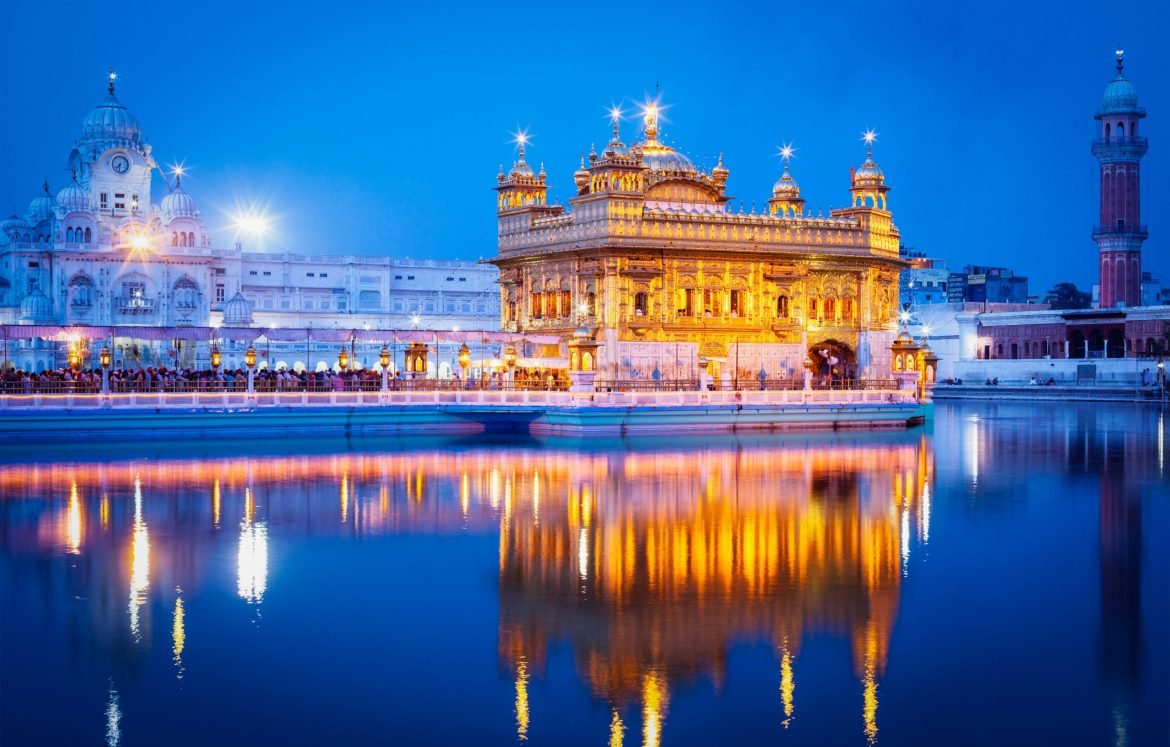The Golden Temple, known as Harmandir Sahib or Darbar Sahib, stands as the spiritual nucleus of Sikhism. Nestled in Amritsar, Punjab, this architectural gem is not just a beacon of spirituality but also a testament to human unity and equality. For those with an appetite for spirituality, history, or cultural exploration, the Golden Temple offers a deeply enriching experience.
This guide unravels the essentials of visiting this sacred site, ensuring you soak in every aspect of its profound beauty and significance.
The Significance of the Golden Temple
The Golden Temple transcends mere architectural brilliance, serving as a spiritual lighthouse for millions globally. At its core, it embodies the principles of openness and acceptance, a fact beautifully represented by its four entrances, inviting people from all walks of life and faiths. With its majestic gold-plated exterior and the tranquil Amrit Sarovar, the temple exudes an ethereal charm that captures the heart and soul of every visitor.
The Universal Symbolism
The Golden Temple’s universal symbolism is deeply rooted in its design and function. The four doors, open to all directions, signify the inclusivity and welcoming nature of Sikhism. This openness is not just a physical attribute but a spiritual one, inviting individuals from all over the world to experience its sanctity and peace. The temple stands as a testament to the idea that spirituality transcends boundaries, uniting humanity in its quest for peace and understanding.
Spiritual Resonance
For the devout and seekers alike, the temple’s spiritual resonance is palpable. The continuous recitation of the Guru Granth Sahib within its premises fills the air with an aura of divine tranquility. Pilgrims and visitors often speak of an indescribable peace that envelops them as they step into the temple complex, a feeling that lingers long after they leave. This spiritual ambiance is enhanced by the serene waters of the Amrit Sarovar, believed to possess healing properties.
Architectural Splendor
Architecturally, the Golden Temple is a masterpiece that harmoniously blends elements from Hindu and Islamic styles. Its intricate marble work, gilded domes, and elegant design reflect a confluence of cultures and artistic traditions. The central shrine, set amidst the sacred pool, is a sight of awe, symbolizing the lotus flower that rises pure from the muddy waters, an embodiment of purity and spiritual awakening. This architectural harmony is a mirror of the spiritual unity that the temple advocates.

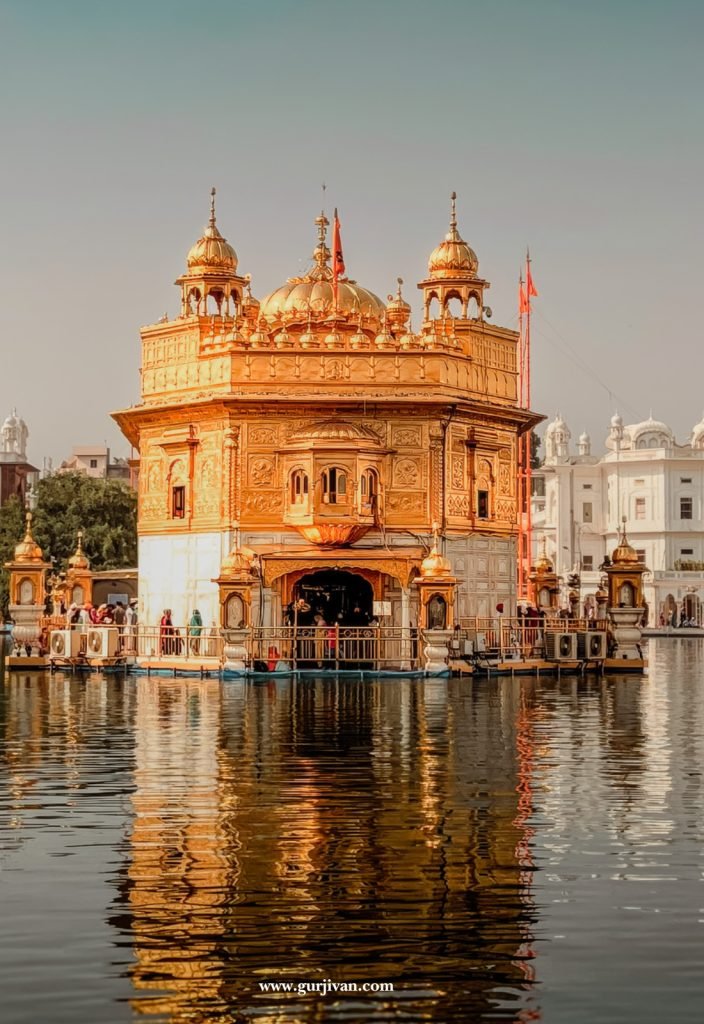
Planning Your Visit
A visit to the Golden Temple is a journey of both physical and spiritual exploration. From choosing the right time to visit to understanding the logistics of getting there, careful planning can enhance your experience manifold. Here’s how you can prepare for your visit to this iconic spiritual center.
Best Time to Visit
The Golden Temple welcomes visitors throughout the year, but timing your visit can significantly impact your experience. The cooler months from November to March are particularly appealing, offering a comfortable climate for exploration.
Weather Considerations
During these cooler months, Amritsar experiences mild temperatures, making it ideal for outdoor activities and exploration. The temple complex, with its open spaces and reflective pool, can be fully enjoyed without the discomfort of the summer heat. The winter season also sees fewer crowds compared to peak tourist times, allowing for a more intimate experience.
Festive Occasions
Visiting during Sikh festivals such as Vaisakhi or Guru Nanak Gurpurab can add a rich layer to your experience. These occasions are marked by vibrant celebrations, devotional singing, and community gatherings, offering a deeper insight into Sikh traditions and culture. However, be prepared for larger crowds and book accommodations well in advance.
Night Visits
The temple takes on a magical aura during the night when it’s illuminated against the dark sky. Visiting during the evening can offer a different perspective, with the reflection of the golden structure shimmering in the Amrit Sarovar, creating a mesmerizing sight that stays etched in memory.
How to Get There
Reaching the Golden Temple is convenient, thanks to Amritsar’s well-developed connectivity by air, rail, and road. Whether you prefer flying, taking a train, or driving, here’s how you can make your way to this sacred site.

By Air
The Sri Guru Ram Dass Jee International Airport, approximately 13 kilometers from the temple, connects Amritsar to major cities in India and abroad. Regular flights operate from Delhi, Mumbai, and other metropolitan hubs, making air travel a swift and comfortable option. From the airport, taxis and airport shuttles are readily available to take you to the temple.
By Rail
Amritsar railway station serves as a major junction on the Indian Railways network, with numerous trains plying from key cities such as Delhi, Kolkata, and Mumbai. The station’s proximity to the temple makes it a convenient choice for those preferring train travel. From the station, auto-rickshaws and cabs can be hired for a short ride to the temple complex.
By Road
For those who enjoy road trips, Amritsar is well-connected by highways and roads. State and private buses operate frequent services from neighboring cities, while taxis and rental cars offer flexibility for those preferring to drive. The journey by road allows you to enjoy the scenic landscapes of Punjab, adding a touch of adventure to your pilgrimage.
Entry Requirements
While entry to the Golden Temple is free, certain customs and etiquettes are observed to maintain the sanctity of the space. Understanding these requirements is essential for a respectful and enriching visit.
Dress Code
Modesty is key when visiting the Golden Temple. Both men and women are expected to dress conservatively, with shoulders and legs covered. Scarves or handkerchiefs are provided at the entrance for covering your head, a sign of respect in Sikh culture.
Ritual Purification
Before entering the temple complex, visitors are required to remove their shoes and wash their feet. This ritual purification signifies leaving behind the impurities of the outside world, preparing oneself for the spiritual journey within.
Conduct and Photography
Maintaining silence and a respectful demeanor is crucial, especially within the inner sanctum. Photography is allowed in the outer areas but refrain from taking pictures inside the main shrine to respect the spiritual atmosphere. Adhering to these customs allows visitors to fully immerse themselves in the temple’s sacred ambiance.
Exploring the Golden Temple Complex
The Golden Temple complex is a tapestry of spiritual and cultural experiences, each aspect contributing to its overall aura of divinity and unity. As you explore its various facets, you’ll uncover layers of history, devotion, and community service that define this sacred space.
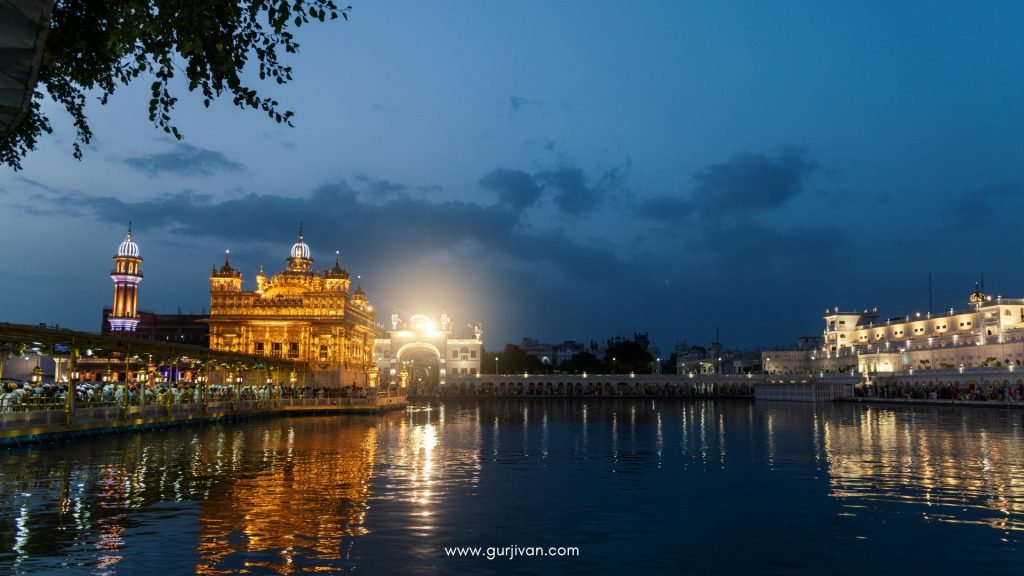
The Harmandir Sahib
Central to the complex is the Harmandir Sahib, the main shrine that draws pilgrims and visitors from all over the world. Its location amidst the holy water tank, the Amrit Sarovar, adds to its spiritual significance.
Sacred Scripture and Rituals
Inside the Harmandir Sahib, the Guru Granth Sahib, the holy scripture of Sikhism, is enshrined. Continuous recitation of the scripture, known as Akhand Path, fills the air with spiritual hymns, creating an atmosphere of profound devotion. Pilgrims often sit around the shrine, listening to the hymns and meditating, finding solace in the divine words.
Ritual Bathing
The Amrit Sarovar, surrounding the shrine, is considered sacred, with many believing in its healing powers. Pilgrims often take a ritual bath in its waters, a practice that symbolizes spiritual cleansing and rejuvenation. This act of faith is a pivotal part of the pilgrimage, reinforcing the connection between the physical and the spiritual.
Architectural Beauty
The beauty of the Harmandir Sahib lies not just in its gold-plated exteriors but also in its intricate design and architecture. The lower level, adorned with exquisite marble inlay work, contrasts beautifully with the gilded upper floors, creating a visual harmony that mirrors the spiritual unity it represents.
The Langar Hall
One of the most remarkable features of the Golden Temple is the Langar Hall, where the practice of community service and equality is exemplified through the serving of free meals to all visitors.
The Concept of Langar
Langar, the community kitchen, is a fundamental aspect of Sikhism, symbolizing equality and selfless service. Regardless of caste, creed, or social status, everyone sits together on the floor to partake in the meal, emphasizing the Sikh tenet of oneness among humanity.
Volunteering Opportunities
Visitors are encouraged to participate in the preparation, serving, and cleaning processes in the Langar Hall. This act of volunteering, known as Seva, is a deeply fulfilling experience, allowing individuals to contribute to the community and understand the values of humility and service.
A Culinary Experience
The meals served at the Langar are simple yet nourishing, typically consisting of roti, dal, and rice pudding. Despite the simplicity, the experience of sharing a meal with thousands of people from diverse backgrounds is profoundly impactful, offering a taste of the communal harmony that the Golden Temple embodies.
The Akal Takht
Within the Golden Temple complex stands the Akal Takht, a symbol of spiritual and temporal authority in Sikhism.
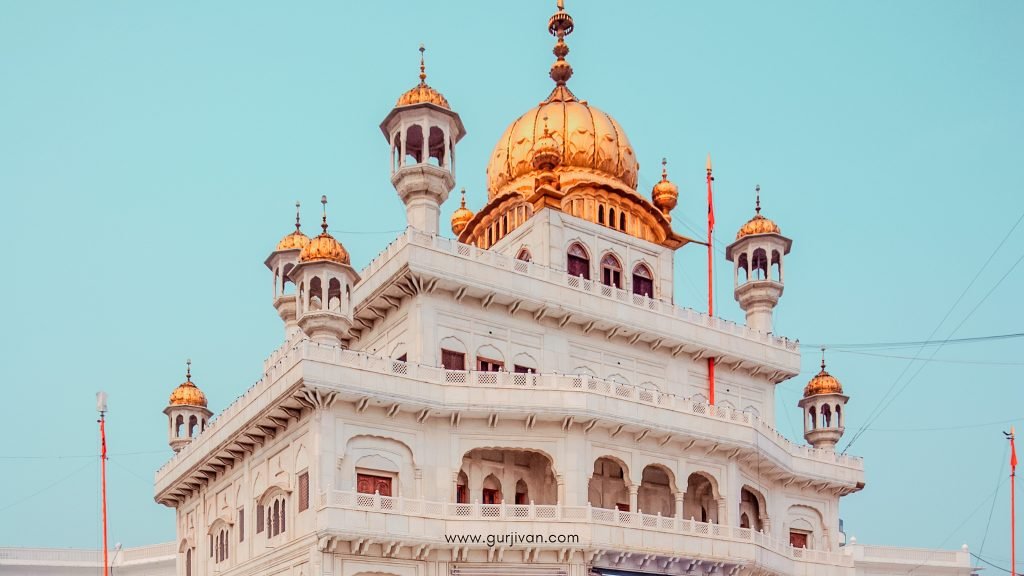
Historical Significance
Established by Guru Hargobind, the Akal Takht serves as the highest seat of earthly authority for Sikhs. It has historically been a place for discussing important religious and political matters, reflecting the intertwined nature of spirituality and governance in Sikh culture.
A Symbol of Justice
The Akal Takht stands as a beacon of justice and resilience, representing the Sikh community’s commitment to righteousness and equality. Its history is marked by moments of trials and triumphs, embodying the spirit of perseverance and faith.
Architectural Grandeur
Architecturally, the Akal Takht complements the Golden Temple, with its own unique design and grandeur. The structure, with its majestic façade and elevated platform, symbolizes the eternal throne of the timeless one, reinforcing the spiritual authority it represents.
Tips for a Memorable Visit
To make the most of your visit to the Golden Temple, consider these tips that enhance your experience and deepen your connection to the sacred space.
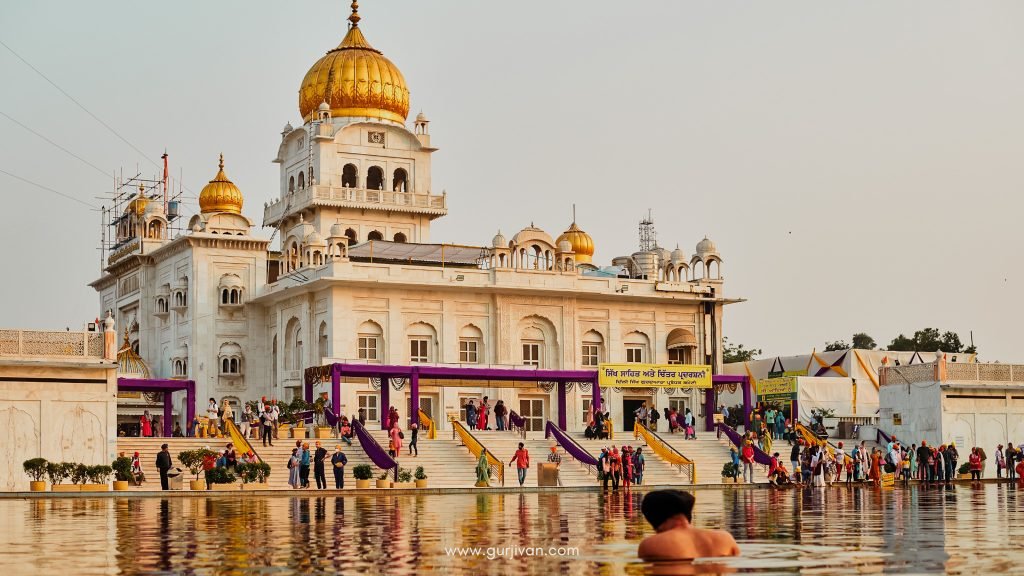
Attend the Morning or Evening Prayers
The temple’s atmosphere during the early morning or evening prayers is truly mesmerizing. The soulful hymns, coupled with the sight of the temple illuminated at night, offer a spiritual experience like no other.
Morning Serenity
Arriving at dawn allows you to witness the temple in its tranquil state, with the first light of day casting a gentle glow on the golden structure. The morning prayers, or Asa di Var, fill the air with spiritual melodies, setting a peaceful tone for the day.
Evening Illumination
In the evening, the temple is a sight to behold, bathed in lights that reflect off the Amrit Sarovar. The night prayers, or Rehraas Sahib, accompanied by the lighting ceremony, create an enchanting atmosphere, leaving visitors with a sense of inner peace and reflection.
The Power of Kirtan
Experiencing Kirtan, the devotional singing of hymns, is a highlight of any visit. The powerful voices and melodic tunes resonate deeply, offering a moment of spiritual connection and introspection.
Volunteer
Consider volunteering in the Langar Hall or other parts of the temple. It’s a wonderful way to give back and be part of the community spirit that defines the Golden Temple.
Seva and Its Impact
Engaging in Seva, or selfless service, is an integral part of the Sikh experience. Whether it’s helping in the kitchen, cleaning the premises, or assisting fellow visitors, each act of service contributes to the community’s welfare and fosters a sense of belonging.
Personal Growth
Volunteering offers a unique opportunity for personal growth and reflection. It encourages humility, empathy, and gratitude, as you work alongside people from diverse backgrounds, united in the spirit of service.
Building Connections
Through volunteering, visitors often find themselves forming meaningful connections with others. The shared experience of service creates bonds that transcend cultural and linguistic barriers, enriching the overall experience of visiting the Golden Temple.
Respect the Customs
Always maintain silence in the inner sanctum and follow the temple’s customs. Photography is allowed in the outer areas, but refrain from taking pictures inside the main shrine.
Understanding Etiquette
Respecting the customs and traditions of the Golden Temple is crucial for preserving its sanctity. Understanding the reasons behind these practices enhances your appreciation of the space and its spiritual significance.
A Mindful Experience
Being mindful of your surroundings and actions allows you to fully immerse yourself in the temple’s spiritual ambiance. This respectful approach not only honors the sacredness of the site but also enriches your personal experience.
Cultural Sensitivity
Embracing cultural sensitivity and openness during your visit fosters a deeper understanding of Sikh values and traditions. This mindset enables you to engage with the temple and its community in a meaningful and respectful manner.
Stay Nearby
There are numerous hotels and guesthouses near the temple for visitors who wish to spend more time exploring. Some even offer views of the temple complex.
Accommodation Options
Amritsar offers a range of accommodation options to suit different preferences and budgets. From luxury hotels to budget-friendly guesthouses, visitors can find a place that meets their needs while providing easy access to the Golden Temple.
Proximity Benefits
Staying near the temple allows for convenient access to the complex, making it easier to attend prayers and participate in activities at different times of the day. It also provides the flexibility to explore the surrounding area and local attractions.
Immersive Experience
Choosing accommodation with views of the temple enhances your visit, offering a constant reminder of the sacredness and beauty of the Golden Temple. Waking up to the sight of the golden structure or witnessing its illumination at night can be a deeply moving experience.
Beyond the Temple: Exploring Amritsar
While the Golden Temple is undoubtedly the highlight of Amritsar, the city itself is a treasure trove of history, culture, and culinary delights. Exploring beyond the temple adds depth to your visit, offering a well-rounded experience of this vibrant city.


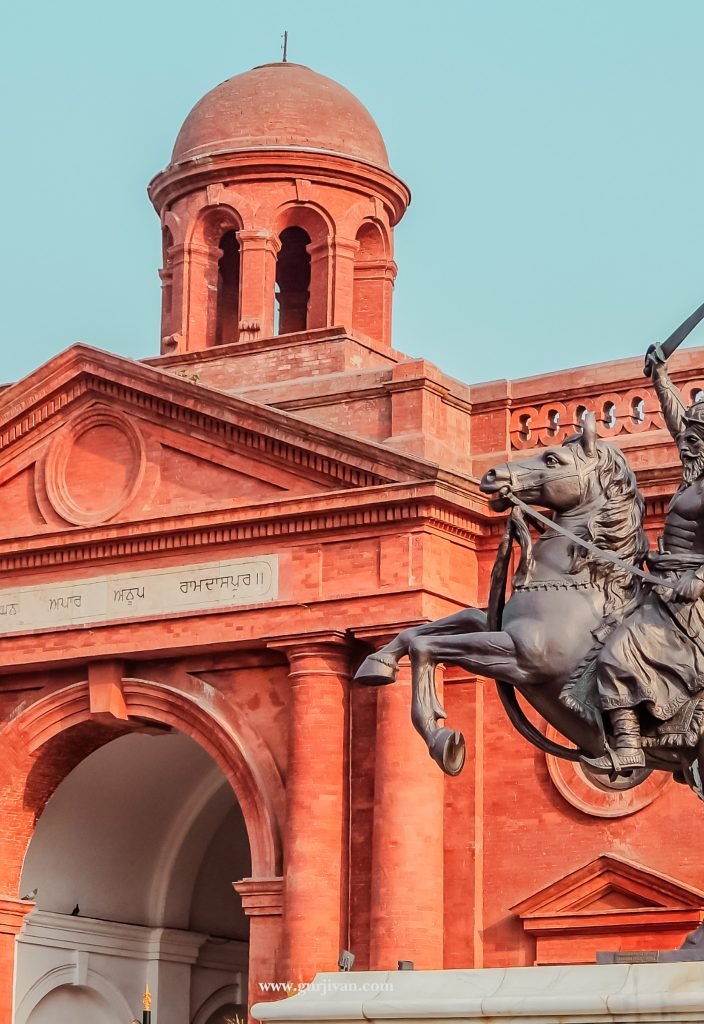
Historical Landmarks
Amritsar is home to several historical sites that provide insight into India’s rich past and cultural heritage.
Jallianwala Bagh
Located a short walk from the Golden Temple, Jallianwala Bagh is a poignant reminder of India’s struggle for independence. The site commemorates the tragic massacre of 1919, with a memorial and museum that offer a somber reflection on the sacrifices made for freedom.
Partition Museum
The Partition Museum, dedicated to the history and impact of the 1947 partition, offers a moving exploration of one of the most significant events in modern history. Through exhibits and personal stories, visitors gain an understanding of the human cost and resilience associated with the partition.
Gobindgarh Fort
A visit to Gobindgarh Fort provides a glimpse into Amritsar’s military history. The fort, once a symbol of power and defense, now hosts cultural performances, museums, and interactive exhibits, offering a unique blend of history and entertainment.
Cultural Experiences
Amritsar’s rich cultural tapestry is woven through its bustling markets, vibrant festivals, and diverse culinary offerings.
Local Bazaars
Wandering through Amritsar’s bazaars offers a sensory feast of colors, sounds, and aromas. From traditional Punjabi attire to handcrafted goods, these markets are perfect for shopping and experiencing the local culture firsthand.
Culinary Delights
Amritsar is renowned for its culinary scene, offering a taste of authentic Punjabi cuisine. Don’t miss trying local specialties like Amritsari kulchas, butter chicken, and lassi, each dish reflecting the region’s rich flavors and culinary traditions.
Festivals and Celebrations
Participating in local festivals and celebrations provides an immersive experience of Amritsar’s cultural vibrancy. Events like Baisakhi and Lohri are marked by music, dance, and community gatherings, offering a lively and joyous atmosphere.
Conclusion
Visiting the Golden Temple is more than just a travel experience; it’s a journey into the heart of Sikhism and a testament to the values of equality, humility, and service. Whether you’re drawn by its spiritual significance, its architectural beauty, or its cultural richness, the Golden Temple promises an unforgettable experience that will stay with you long after you leave.
Plan your visit with an open heart and a willingness to embrace the spirit of oneness that the Golden Temple embodies. Whether you’re exploring the temple complex or engaging with the vibrant city of Amritsar, you’re sure to create memories that will last a lifetime. Approach your journey with curiosity and respect, and you’ll find that the Golden Temple offers not just a glimpse into Sikhism, but a profound connection to the universal values that unite us all.




